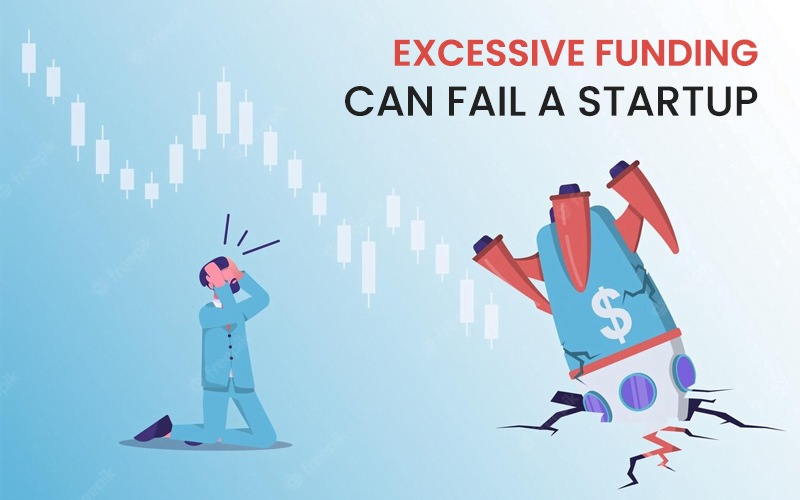
It’s critical to realize that not all funding is created equal when starting a business. In reality, one of the biggest mistakes a startup can make is taking on too much capital too soon.
While it may be tempting to commit a sizable amount of investment capital, it’s crucial to keep in mind that success is not always correlated with financial resources. In many instances, it can even result in a company’s closure.
This is due to the fact that startups with excessive funding frequently loose sight of their initial mission and goals. They become bloated and unfocused, and their expenses quickly spiral out of control. As a result, they frequently fall short of meeting the expectations of their shareholders and investors.

90% of Indian startups fail within the first five years of operation, according to a study by the IBM Institute.
There are many reasons why Indian startups fail before they reach their potential, here are a few common reasons for their failure: weak business models, bad planning, inaccurate customer insights, lack of original ideas, excessive funding without planning and lack of focus, agility, and tech capability, in addition to leadership gaps. Indian startups lack distinctive business models because the majority simply copy profitable models from other countries without distinctive native knowledge and insights.
Every company needs a solid revenue model and must be able to live off the money it makes from selling its goods and services. However, in the startup ecosystem, some startups receive generous funding, which they then lavishly spend on expensive offices, excessive salaries and benefits for employees, and the construction of products without considering the return on investment. All of these things are transient, and most startups that lavishly borrow money from investors fail.
If you want to ride a bike well. You must first acquire the skill of cycling without supporters. Utilizing supporters all the time only slows down the process of learning to cycle independently.
So instead of just looking out for investors, it is equally important to plan out your funding whether you do it on a personal level or with the help of an investor, and also check what is the optimum amount of funds that can help you grow your startup.

Insufficient revenues can cause an organization to run out of money if there is a high cash burn rate and out-of-pocket costs. Local Banya started to offer fantastic deals and low prices on orders once it had amassed a $5 million fund, which resulted in a high cash burn rate.
According to Steve Blank, the dean of the lean startup movement, a disciplined approach, like a discovery-driven disruption (DDD) framework, can significantly lower the failure rate—and at a lower cost.
The core principle of DDD is that one should break a project down into stages rather than designing an expensive, risky plan for an uncertain venture. Identify and test assumptions at each stage, ideally for the least amount of money and time. Startups will be de-risked as a result, and if things don’t go as planned, an early exit will be possible. Then, instead of being afraid of failing, one can ask: “What is it worth to our organization to learn something?” Whatever the outcome, if the answer is determined to be worthwhile, it need not be considered a failure.
Finally, excessive funding may cause a startup to fail. Having no financial concerns can cause a startup to become complacent and stop innovating. A startup may also overspend if it receives too much funding, which can give it a false sense of confidence. Startups should take care to only raise the money they actually need and to spend it wisely.